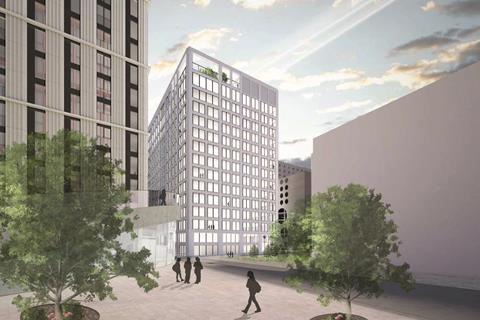The coronavirus pandemic has concentrated minds as we focus on keeping safe and well, but the sustainability agenda hasn’t gone away.

At Lloyds, improving green credentials is something we’ve been working on at speed with clients across the real estate and housing sector for some time now.
Back in 2016, the year of the UK’s EU referendum and Trump’s election in the US, we launched our Green Lending Initiative.
It was one of the first such initiatives offered by the UK banking sector and saw us earmark £1bn of funding to support clients to improve the energy efficiency of their buildings or to develop new ‘green’ buildings.
From day one, we’ve provided loan margin discounts of up to 20bps to those serious about improving their green credentials.
It didn’t matter if they were already well advanced on their road to net zero carbon or if they were just at the start of the journey. By tailoring the green covenants in the deals to each client, our belief was that cheaper financing would help bring more investors and developers to the table.

Since then, we’ve supported projects around the UK and have lent more than the initial £1bn of support. We have acted as Green Coordinator on two of the largest green financing deals in the sector – for Unibail Rodamco’s €600m green KPI-linked Revolving Credit Facility in 2017 and for Bruntwood SciTech’s £185m four-bank financing in 2019.
In 2018, we provided a £15m green loan to develop a BREEAM Excellent-rated building, The Green House, in London. Now this is complete, we have recently termed this out as part of a wider £25m financing linked to green covenants at company level.
A scaleable solution
While some typically larger businesses have already taken steps to improve sustainability, it became apparent to us that to make improving sustainability a priority for the whole sector we had to find something scaleable, cheap or free to access and easy to understand for all.
Alongside supporting the development of new assets with high sustainability credentials, we needed to back the retrofitting of existing ones as this could make the biggest difference.
That’s where our Green Buildings Tool came in. After a pilot last summer with clients ranging from single-property owners to some of the UK’s largest investors, we are excited to be rolling it out to commercial banking clients.
We are starting with our Real Estate and Housing segment, headed by Madeleine McDougall and Andy Hulme, and will open it to other sectors and business sizes this year.
It is a digital tool developed in partnership with CFP Green Buildings and helps real estate owners instantly assess the business case for undertaking retrofitting initiatives and consider costs, savings, CO2 reductions and EPC impacts.
Through the pilot, it became clear that at the smaller end of the market, where time and money can be particularly tight, the tool helps businesses focus on what is achievable and which actions create energy efficiencies.
For the sector’s bigger players, the tool’s ability to process vast quantities of properties quickly is invaluable, distilling data into easy-to-navigate recommendations. The metric-rich output helps technical staff feed suggestions up to C-Suite and finance colleagues to get their support.
While coronavirus has necessarily dominated the agenda this year, some businesses are considering the path back to ‘normal’. As they do this, using the free tool to assess where in a real estate portfolio sustainability may be improved is quick and easy, but something that could start a potentially powerful journey right away.
David Willock is managing director, sustainability and structuring, real estate and housing at Lloyds Bank




























No comments yet